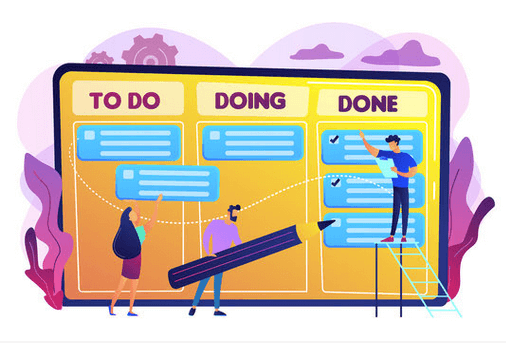When you’re a lone wolf product manager, it’s easy to add value since everyone counts on you for everything. When you’re leading a product team, you’re setting the tone and direction, doling out responsibilities, and guiding your staff. Junior product managers, however, usually have to work at defining the scope of their role. Typically your success in this occurs once you’re recognized as an individual contributor with established credibility with your engineering counterparts.
It can be tricky for a junior product manager to figure out where to begin, especially when you’re fresh off the turnip truck and plunged into an enterprise organization. How can you get more involved? How can you learn the ropes without “hovering”? Where are the quick and easy opportunities to contribute while you’re still finding your footing?
Getting over your imposter syndrome and playing an active, helpful role in a larger product organization ultimately comes down to picking your spots.
You need to use your “newbie-ness” to your advantage. By adding a fresh set of eyes to the equation, you can sus out any blind spots. It’s your opportunity to focus on overlooked areas the team has missed or neglected while their attention was drawn elsewhere.
6 Ways A Junior PM Can Support Developers At Large Companies
1. Make your presence known in a good way
When you’re new to a company, it’s essential not to come in seemingly overcritical of what transpired before you got there. Especially when you don’t come in with a long, successful track record. No one wants the new person to start trashing everyone’s work. This is particularly true because they put time and effort into doing it in the first place.
However, because you’re new, you have a unique, once-per-career opportunity to ask many questions. A good product manager gets to the “why,” and assessing the current landscape is a perfectly valid motivation to do that.
2. Listen without giving your opinion—yet
The thorny bit is probing and questioning the status quo without attacking and challenging it… or the people who helped create it. You might eventually get there, but that’s not something you want to be doing much of in your first 90 days.
Avoid being viewed as a wannabe know-it-all. To do this, frame your exploration of the product, the organization, and the target market in curiosity. Park your judgment in a corner. Ask questions to deepen your understanding of what the product does now, how customers use it, and what methods and rationale to get things to their current state.
While you might have to go against your instincts to insert your opinion, your early days of exploration must be strictly fact-finding. Suppose you begin offering up advice or tearing apart widely-held assumptions in the organization. In that case, you might set a bad tone for your tenure. Key colleagues may tune you out or view you as an adversarial figure.
Instead, make your notes and keep your criticisms and ideas to yourself for the time being. This will not only keep your image untarnished but also gives you more time to get a broader view of how things work and why. Not to mention additional opportunities to get multiple perspectives from different stakeholders.
3. Stick to the why and don’t worry about the how
As a newcomer, you’re walking into a situation where months or years of work have been poured into the product. Things were built in a certain order using particular tactics that you might not have chosen if you’d been around.
Even if you have strong feelings to the contrary, there is little-to-no upside in litigating these decisions. You weren’t added to the team to perform a post-mortem on projects you weren’t there for. This will only serve to antagonize product development and poison those waters.
So, rather than dwell on the past, focus on the future. Make every request meaningful by grounding it into why it matters, both to the customer and the business.
By providing this context, you empower the implementation team to develop a superior solution by laying out the end goal and background. By pivoting away from a prescriptive “what” to build or, even worse, “how” to build it, you position the project for success without alienating your coworkers.
The more underlying motivations you convey to the team, the more motivated they’ll be to craft a solution that truly addresses the customer pain point and/or business objective you’re aiming to solve.

4. Bone up on the corporate strategy
Any new product team member must become well versed in the business’s strategy. If you don’t know what the organization values and are trying to accomplish, there’s little chance your product ideas will actually move the needle on what matters.
Once again, since it’s early in your tenure, you should be in full-on listening mode. You want to comprehend and absorb the nuances of the strategy—not challenge its efficacy.
But that doesn’t mean you can’t ask additional questions. You should be motivated to really understand the entire approach, the underlying rationale and assumptions, and any key objectives.
The ability to articulate and apply the strategy to your product management activities is essential. Not only because it means your roadmap is aligned but also so you can frame everything with its strategic relevance when discussing items with developers. They’re just as motivated to see how the tasks they’re asked to complete tie back to the overall corporate strategy and goals. Additionally, this helps them come up with superior designs and user experiences.
This conversance and familiarity with the strategy will (and should) come into play during prioritization and your user stories. Keeping that context ever-present makes everyone’s job easier.
5. Know your customer
This isn’t a revolutionary suggestion, but it’s something to keep top of mind at all times. Within the company, you are the voice of the customer (with some major assists from product marketing, sales, and support). You are the one articulating their plights and advocating for their cause.
But acting as the customer base’s proxy requires a true understanding of their needs and situation. This means proving out your own assumptions by really digging into their world through a combination of qualitative and quantitative research.
Since you’re not the first hire into the product team, there’s likely plenty of existing research to sink your teeth into. Definitely start here because it is not only already available, but it will also illuminate what assumptions your colleagues are already operating under.
From there, it’s time to corroborate what you’ve reviewed with some first-hand customer interactions and internal conversations. Riding shotgun on sales calls, support inquiries, and doing a few customer interviews of your own is a great way to wade into their world. These efforts should reveal if their assumptions match the existing in-house research and understanding of the customer profile. This is especially key if your product targets specific vertical industries or other narrow personas.
After having gone to school on the customer using existing and fresh material, you can try finding the gaps in the current offering and opportunities for enhancement and expansion.
6. Leverage data
There’s nothing better to bolster your case than hard supporting evidence. This is particularly helpful to someone new to the organization whose instincts and intuition are still highly suspect by some colleagues.

So before you make any big moves, be sure you have the data to back it up. Not only can you tap into the existing analytics and KPIs, but you can also define some of your own. Slicing and dicing data is another excellent way to bolster your credibility and add additional value to the team.
Going further, if your initial investigation spots a hole in what’s available, you can lobby for additional instrumentation or an addition to the analytics dashboard. Just be sure it strengthens the business’s understanding of customer behavior and/or how it’s progressing toward strategic goals and not just another vanity metric.
Get Off To a Great Start
Your initial weeks and months with the organization won’t completely define your tenure there, but they will directly influence your overall trajectory. Come off as cocky or lazy or helpless, and that reputation will follow you until proven otherwise.
You’ll be ahead of the game if you show a genuine interest and use your active listening skills. Try to ramp up your workload as fast as possible without compromising your output quality (or your sanity). This demonstrates what you have to offer and a solid work ethic.
Over time, your comfort level with the product and the market will increase—along with your coworkers’ comfort with you. In turn, you’ll find yourself with additional responsibilities, more exposure to the executive team, and more successes under your belt.




